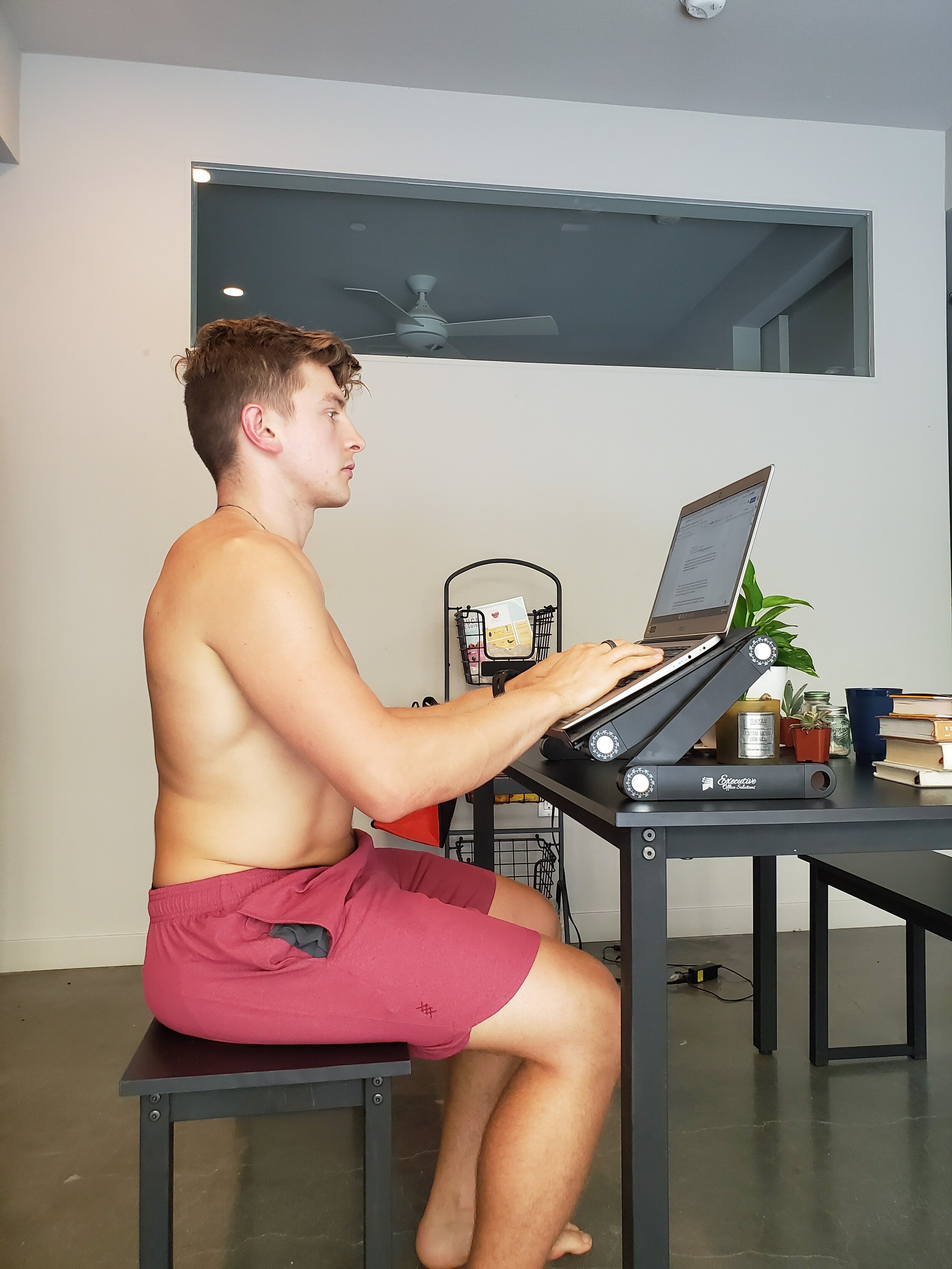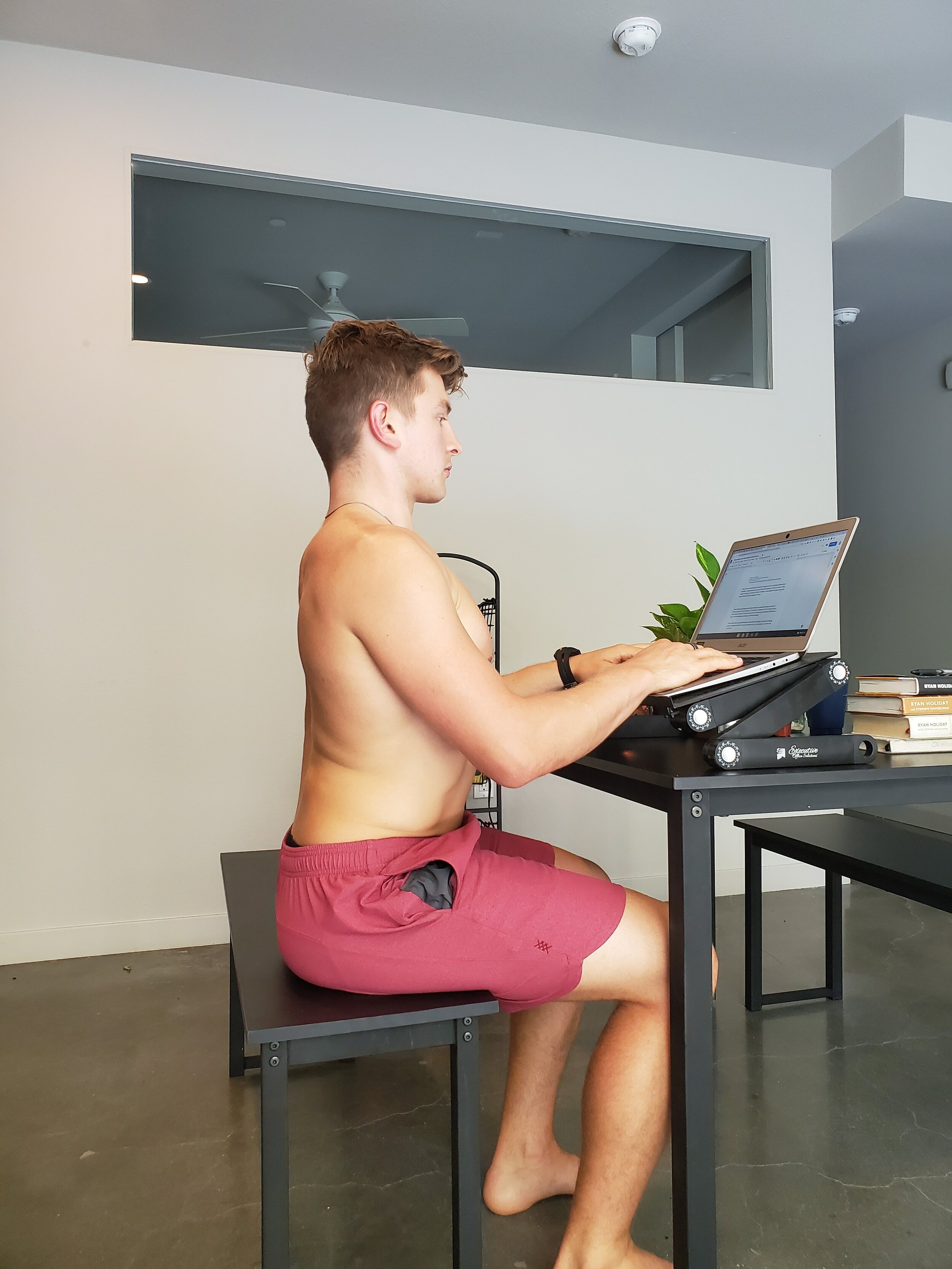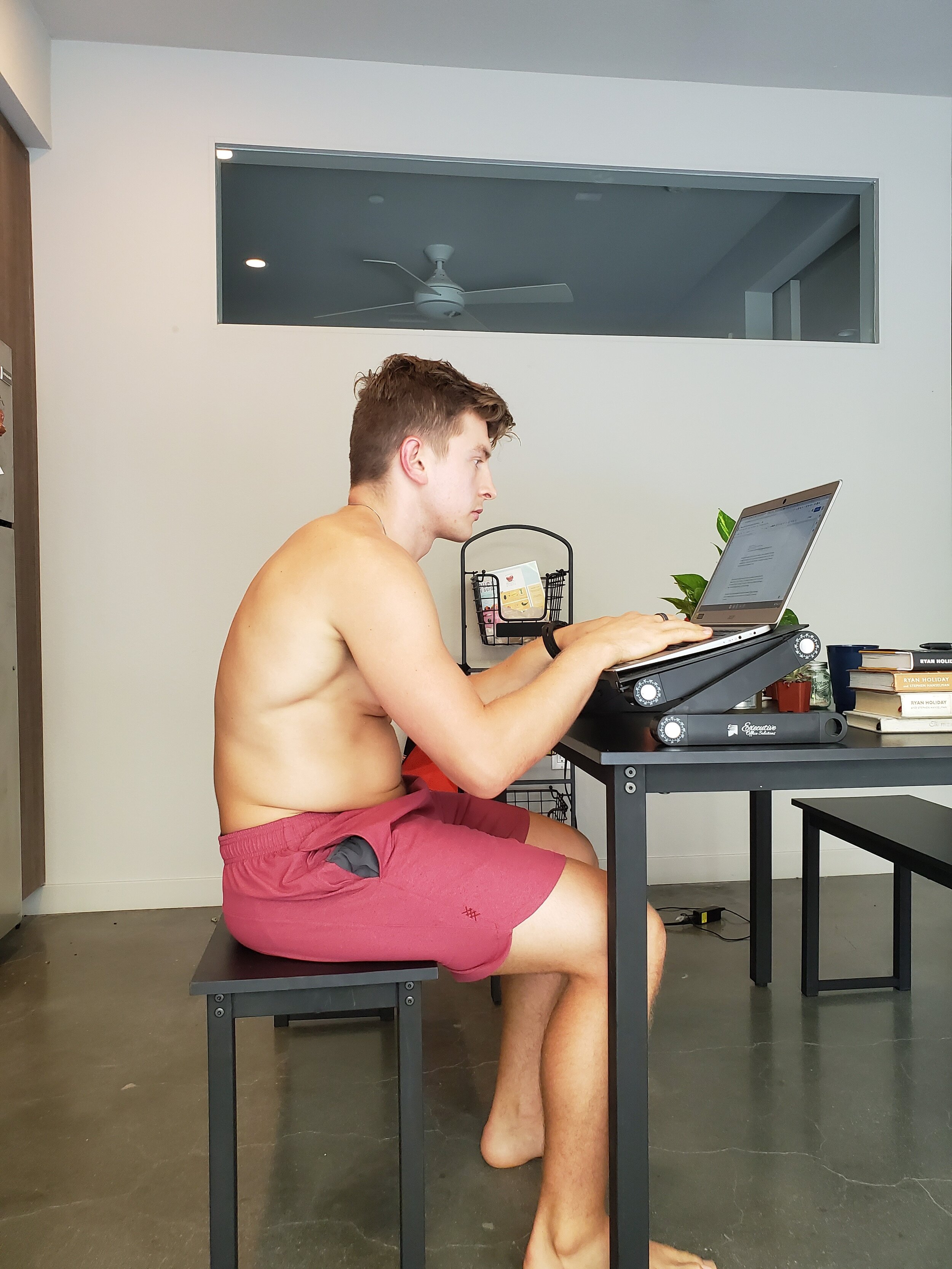Sitting Posture & Back Pain
According to the National Institute of Neurological Disorders and Stroke, up to 80% of the population will experience back pain at some point in their life. And half of office workers experience back pain annually (1). Back pain is debilitating. You can't sit, stand or sleep without being in pain. The injury starts to take over your life. At times, the discomfort can be unbearable. But you don’t have to suffer your whole life, you can reduce pain without surgery.
How do I know?
I used to have crippling back pain. I couldn’t sleep or sit through a whole lecture. I have dealt with lower back pain for the last 8 years. But now, it is a thing of the past.
Freshman Year
The first episode occurred at nineteen years old. I was a freshman at East Carolina University. At the time, I was a strong kid training to walk on to the football team. I could bench 350 pounds and dead-lift 415 pounds for 10 reps. But none of those strengths mattered. The class schedule had me sitting six to eight hours a day. My posture crumbled.
During one of my squat workouts, I hurt my back out. It took me six months to recover from the shooting pains down my leg. But it wasn’t the lifting that caused the pain. It was the sedentary lifestyle; combined with poor posture and a weak core that put me at risk.
Posture Matters
Until a couple of months ago, I never knew how influential sitting posture and breathing are on health. And trust me, they matter way more than you realize. On average, most adults sit nine hours a day and breathe about 20,000 times a day. Research shows that sitting for more than eight hours a day drastically increases the risk of disease, especially Type II diabetes (2). Prolonged sitting combined with shallow breathing has been shown to cause low back discomfort and core muscle fatigue. Whereas deep breathing increases core stability (1,3). So, it makes you wonder, why hasn’t anyone ever taught us how to sit properly?
What Is Optimal Sitting Posture?
I am a little embarrassed to write these next words, but I never understood why the "sit bones" were called the sit bones. It turns out, those are the bones you are supposed to sit on. The sit bone, also known as the ischial tuberosity, is located at the bottom of the pelvis and serves as an attachment site for the hamstrings.
Generally speaking, there are three common sitting positions we sit in.
Upright Lumbo-pelvic (first photo)
Thoracic Upright
Slump (last photo)
Can you guess which position is the best? How about the worst?
If you guessed number one, then you are correct! When you sit in an upright position with a relaxed upper body (photo below), the body is aligned and the core stabilizers can do their job. Whereas, the other two positions fatigue the core musculature and increase the risk for injury (4).
How Should You Sit?
Slump Sitting Is The Worst
If you take one thing away from this post, I hope your realize how bad slump sitting is for you. It is associated with greater forward head posture, which has been shown to cause headaches and weaken the three main spinal stabilizing muscles(4).
“Prolonged slumped sitting may relate to internal oblique and transverse abdominis muscle fatigue, which may compromise the stability of the spine, making it susceptible to injury. (1)
And let’s be honest, a forward head posture is not attractive.
Interested in learning more? Sign up for my online coaching program below.




